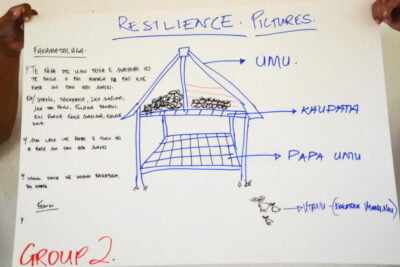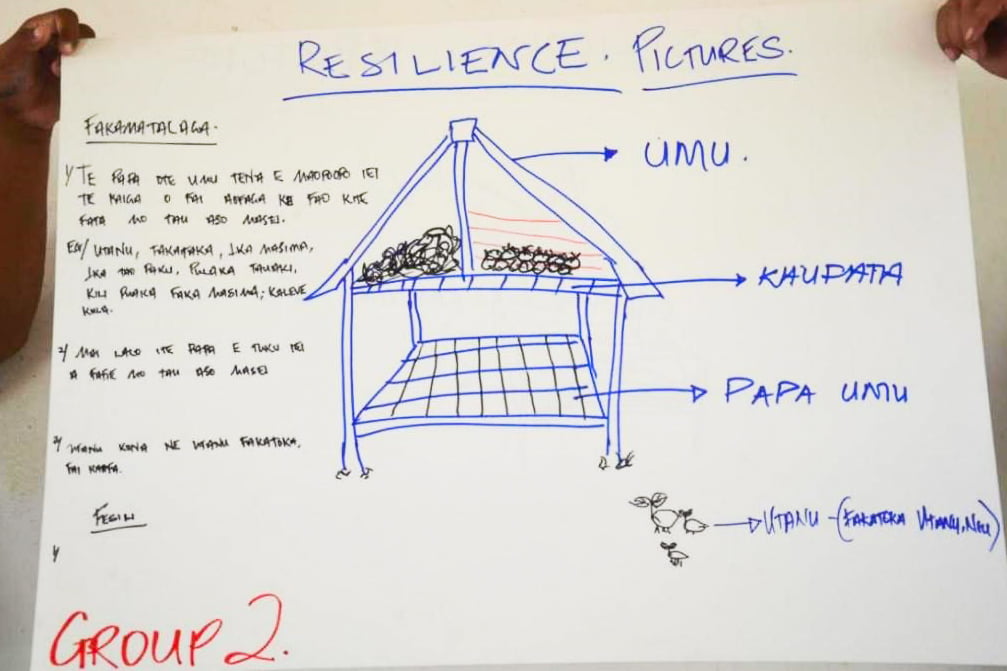Communities in Tuvalu, with the help of the local Live & Learn team, are gathering information for their Community Resilience Profiles. As part of this process, communities draw resilience pictures, which symbolise community strengths and where the community wishes to be at the end of the Climate Resilient Islands process.

One of the community groups living on an outer island in Tuvalu drew the traditional local kitchen as their resilience picture. The kitchen has an attic, which serves as a storage room for preserved food such as dried salted fish, red toddy, and dried coconut (takataka). These preserved foods are used in times of bad weather, famine, drought and other natural disasters.
There is also a floor, where family members sit, eat and discuss plans for the day. Additionally, underneath the floor is where women store their firewood so it won’t get wet when it rains.
The kitchen represents the wider community. It is a place where family members, younger and older generations can discuss their ideas for a better future. It is a place where resilience is linked to planning, a place of strength for withstanding the pressures of a changing climate. For Tuvalu, an atoll nation, this includes threats of sea level rise, cyclones, longer dry periods and pressures on the natural resources found in the lagoon.

In the CRI programme, Community Resilience Profiles are the basis for community plans, which outline various strategic pathways that will address challenges and build secure communities, drawing on local strengths to face the future.
Climate Resilient Islands is a New Zealand Ministry of Foreign Affairs and Trade initiative, implemented by Live & Learn Environmental Education, with funding provided by the New Zealand Government.

